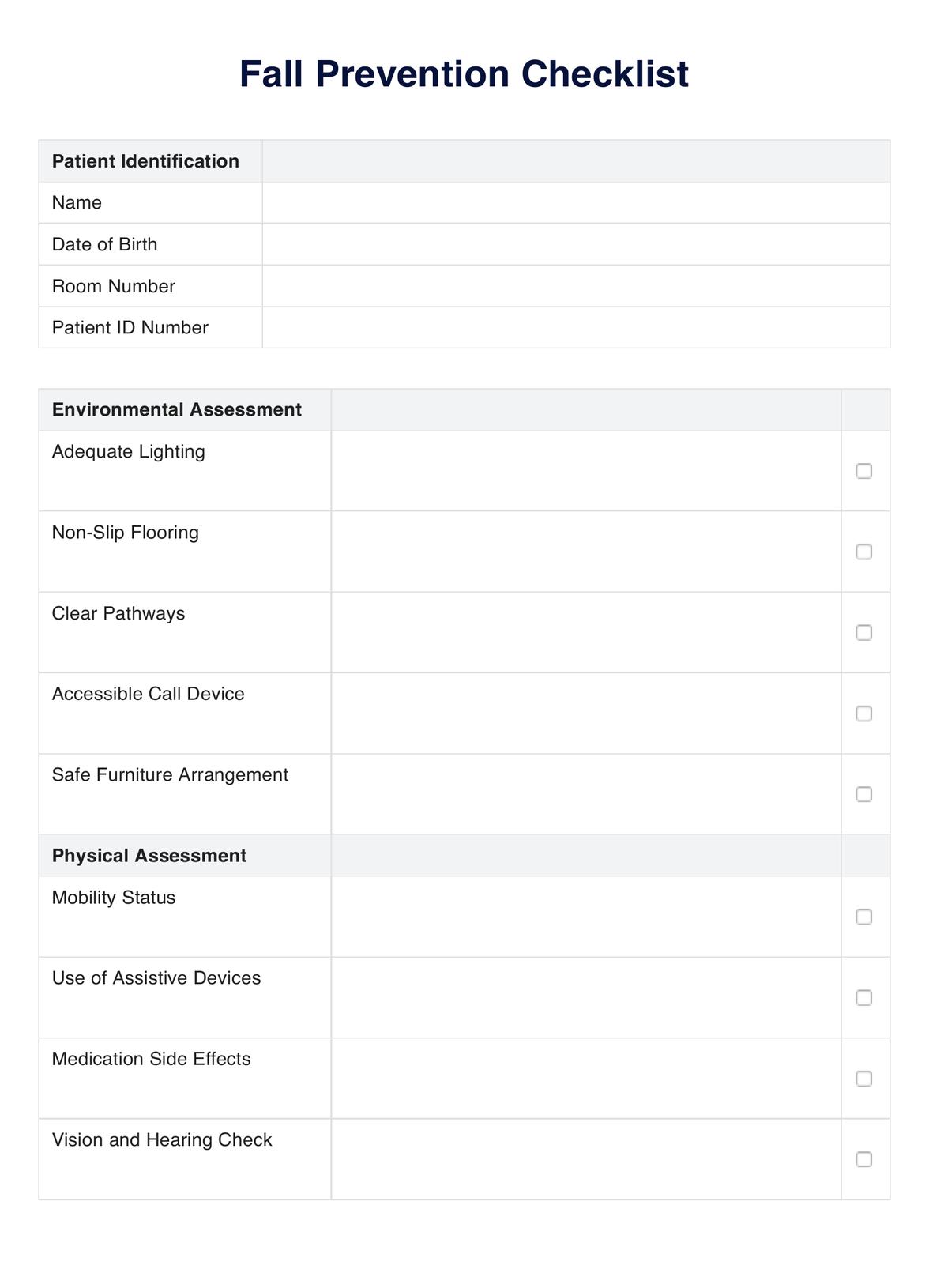Carepatron ensures the highest level of security for patient data. The platform uses advanced encryption and complies with healthcare privacy regulations to protect sensitive information.

Fall Prevention Checklist
Enhance patient safety with Carepatron's Fall Prevention Checklist app. Streamline assessments and improve care with our free guide.
Use Template
Fall Prevention Checklist Template
Commonly asked questions
Yes, Carepatron allows for customizing the Fall Prevention Checklist to suit specific needs and preferences, ensuring that it aligns perfectly with your healthcare protocols.
Absolutely. Carepatron is designed for accessibility across multiple devices, including smartphones, tablets, and computers, enabling healthcare professionals to update and view checklists anytime, anywhere.
EHR and practice management software
Get started for free
*No credit card required
Free
$0/usd
Unlimited clients
Telehealth
1GB of storage
Client portal text
Automated billing and online payments











